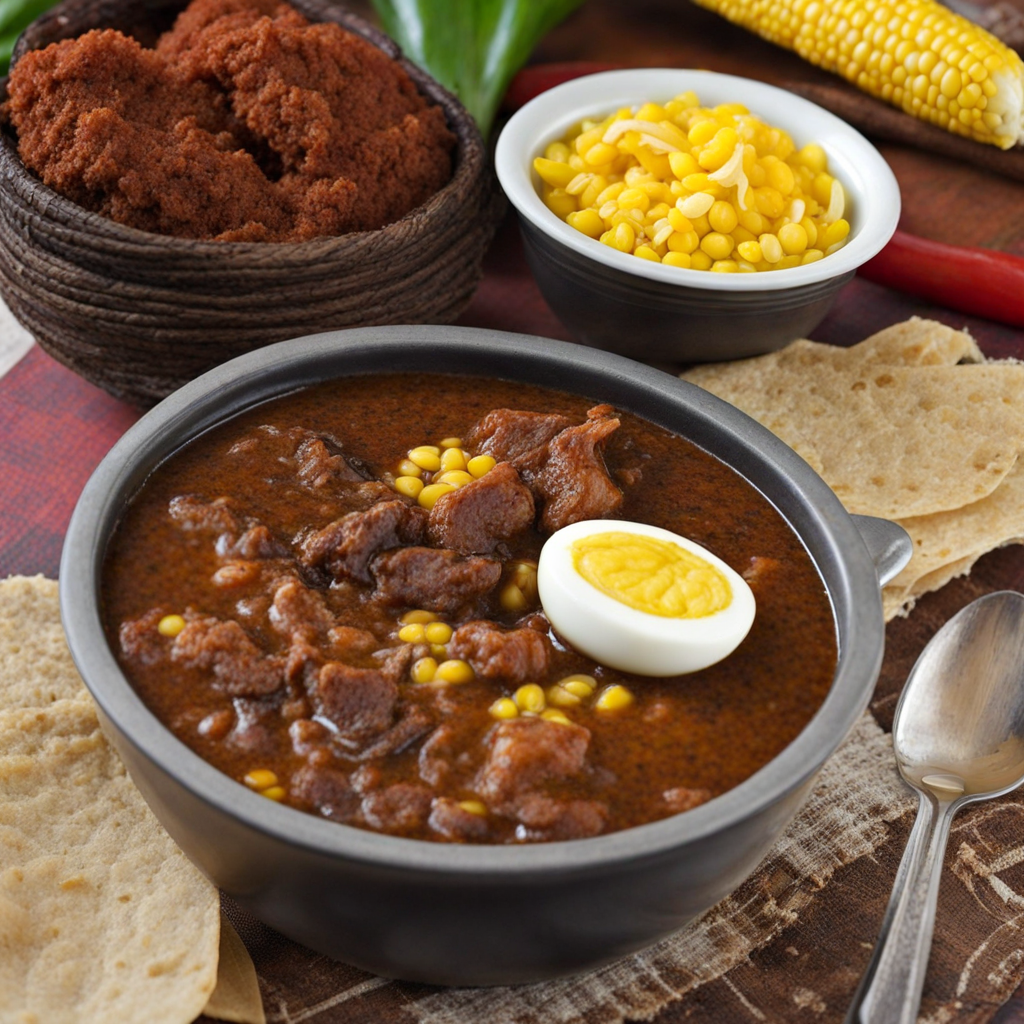Rice and Beans
Rice and beans, a beloved staple of Belizean cuisine, is a delightful dish that showcases the harmonious blend of flavors and textures. The dish typically features tender, fluffy rice cooked to perfection alongside creamy, flavorful black beans. The beans are often simmered with coconut milk, which imbues them with a rich, tropical sweetness. This combination is further enhanced with a medley of spices, such as garlic, onion, and cumin, creating a warm and inviting aroma that fills the kitchen. The simplicity of the ingredients allows each element to shine, making it a comforting meal enjoyed by locals and visitors alike. In Belize, rice and beans are often served as a side dish but can also take center stage as a main course. It is commonly accompanied by succulent proteins, such as stewed chicken or grilled fish, making for a well-rounded meal. The dish is typically garnished with fresh cilantro or a squeeze of lime, adding a zesty brightness that elevates the overall experience. The combination of the earthy beans, the fluffy rice, and the vibrant garnishes creates a colorful plate that is as pleasing to the eye as it is to the palate. What sets Belizean rice and beans apart from similar dishes in other cultures is its unique preparation methods and the use of local ingredients. The traditional cooking technique involves boiling the beans with the rice, allowing the flavors to meld beautifully. The addition of coconut milk is a hallmark of Belizean cooking, infusing the dish with a distinct tropical flair. This beloved comfort food not only nourishes the body but also provides a taste of Belize's rich culinary heritage, inviting those who try it on a flavorful journey through the heart of the Caribbean.
How It Became This Dish
The Culinary Journey of Rice and Beans in Belize #### Introduction Rice and beans is more than just a dish in Belize; it is a symbol of cultural identity, historical tradition, and community resilience. This humble yet hearty combination has traveled through time, intertwining with the nation’s diverse heritage and evolving alongside its people. Understanding the origins, cultural significance, and development of rice and beans in Belize offers a glimpse into the heart of this Central American nation and its culinary landscape. #### Origins: A Melting Pot of Cultures The roots of rice and beans in Belize can be traced back to a confluence of indigenous and colonial influences. The ancient Maya, who inhabited the region long before European contact, cultivated various forms of beans, such as black beans and lima beans, alongside maize and squash in their “three sisters” agricultural system. These legumes were a staple in their diet, providing essential protein in a region where animal protein was scarce. With the arrival of the Spanish in the 16th century, rice was introduced to the region. Originally brought from Asia and cultivated in the Iberian Peninsula, rice quickly became a staple in many Latin American countries, including Belize. The subsequent British colonization in the 18th century further influenced the culinary landscape, introducing new cooking methods and ingredients. The fusion of these diverse culinary traditions—the indigenous use of beans and the Spanish introduction of rice—laid the groundwork for what would become a quintessential Belizean dish. It was during the colonial period that rice and beans began to emerge as a common meal among various communities, including the Creole, Mestizo, and Garifuna populations, each adding their unique flavors and techniques. #### Cultural Significance: A Culinary Symbol of Identity In Belize, rice and beans is more than just food; it represents the nation’s multicultural identity. Each ethnic group has contributed its unique twist to the dish, making it a canvas for cultural expression. For the Creole, who descend from African slaves and British settlers, the dish is often cooked with coconut milk and served alongside stews or fried plantains. The Garifuna, descendants of Afro-Indigenous peoples, may include more spices and flavors, reflecting their West African roots. Rice and beans are often served on special occasions, such as family gatherings, holidays, and community celebrations. It serves as a unifying dish, bringing together people from different backgrounds. The preparation and sharing of rice and beans foster a sense of community, reinforcing social bonds and cultural heritage. The dish also holds a place in Belizean folklore and cuisine, often featured as a staple in local restaurants and homes alike. It is a common sight at street vendors’ stalls, showcasing its accessibility and popularity among all social classes. In fact, rice and beans is often considered the ultimate comfort food, evoking memories of home and family gatherings. #### Development Over Time: Evolution and Adaptation As Belize transitioned through various political and economic changes, rice and beans adapted and evolved, reflecting the resilience of its people. The dish remained a staple even during periods of economic hardship, offering sustenance and nourishment when other food sources were scarce. With the rise of globalization in the late 20th century, Belize’s culinary scene began to diversify, incorporating international flavors while maintaining the essence of traditional dishes like rice and beans. The use of coconut milk, for example, became more pronounced, especially in coastal areas, where coconut palms thrive. This adaptation not only enhanced the flavor but also highlighted the local agricultural products. The introduction of spices such as recado (a traditional sauce made from roasted tomatoes, peppers, and spices) added depth and complexity to the dish, making it a favorite among locals and tourists alike. In recent years, there has been a growing interest in sustainable and health-conscious eating, prompting innovative chefs and home cooks to experiment with rice and beans. Variations now include the use of quinoa or brown rice as healthier alternatives, while still maintaining the traditional flavors and textures. This evolution reflects a broader global trend towards healthier eating, while still honoring the roots of the dish. #### Modern-Day Significance Today, rice and beans continues to be a staple in the Belizean diet, appearing in homes, restaurants, and even upscale dining establishments. It is often served alongside fried chicken, stewed beef, or fresh fish, showcasing the versatility of the dish. Its presence on menus serves as a reminder of the nation’s rich culinary heritage and the importance of preserving traditional foodways. In the realm of food tourism, rice and beans have also become an emblem of Belizean cuisine, attracting visitors eager to experience authentic local flavors. Culinary festivals and events often feature rice and beans as a key dish, celebrating the diversity of Belizean cooking and its cultural significance. Moreover, the dish has sparked discussions about food sovereignty and the importance of local ingredients. As conversations around food and sustainability continue to grow, rice and beans stand as a testament to the power of local agriculture and the importance of preserving traditional culinary practices. #### Conclusion The story of rice and beans in Belize is a rich tapestry woven from the threads of history, culture, and community. From its indigenous origins to its place as a symbol of national identity, this simple dish embodies the resilience and diversity of Belizean society. As it continues to evolve and adapt, rice and beans will undoubtedly remain a cherished staple, nourishing both the body and the soul for generations to come.
You may like
Discover local flavors from Belize







